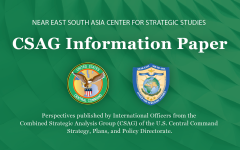Is China Turning the Table to Fuel the Conflict over Kashmir?
June 4, 2021 2021-06-04 17:55Is China Turning the Table to Fuel the Conflict over Kashmir?
By: LTC Youngsuk Lee, Republic of Korea Army, US Central Command: Strategy Plans and Policy Directorate; Combined Strategic Analysis Group
04 June 2021
Introduction:
The deadliest clash between Chinese and Indian armies in Galwan valley occurred on June 15th 2020. As a result, 20 Indian and 4 Chinese soldiers were killed and dozens wounded. This was the first time since 1975 that a confrontation between the two forces along the 3,488 kilometers long China-India Line of Actual Control (LAC) resulted in fatalities (Figure 1).[1] Conflicts between the two Asian giants over the disputed Kashmir region were little incidents besides a war in 1962 and since then there were many small skirmishes along the border. However, what we have to look at is that both China and India are fortifying this mountainous region and reinforcing their forces with heavy weapon systems. Both countries are getting increasingly assertive. Although China and India have agreed on the disengagement of forces, created a buffer zone, and resumed talks to ease tensions, there is always a high possibility of another clash or escalation at any time. The purpose of this paper is to take a look at the prolonged conflict’s background, each stakeholders’ stance over this region, why China and India have been confronting each other for decades over this almost uninhabitable region, and finally what the impact would be on the US and USCENTCOM area of responsibility, especially from the perspective of the Great Power Competition with China.
Key Points:
- Tensions culminated when a deadly brawl between China’s and India’s army broke out in Ladakh (Aksai Chin on Chinese side) and claimed several lives on both sides. Fortunately, the situation was de-escalated by the two nations’ agreement to pull back their forces from the brink. However, there is still the possibility that another clash will escalate into a large-scale military conflict at any time as both sides have been very assertive over this contested region for decades.
- Neither China nor India will loosen its grip on this region. In particular, China is likely to be more assertive as this Himalayan region is critical to China’s “One China policy” and “Belt and Road Initiative.”
- China is expected to have the upper hand when it comes to territorial conflict in this region as China has superior economic capabilities and the endorsement from a strong ally, Pakistan.
- This low-intensity conflict is most likely to affect the so-called “Great Power Competition with China” as India has apparently a closer relationship with the US.
The opinions and conclusions expressed herein are those of a number of international officers within the Combined Strategic Analysis Group (CSAG) and do not necessarily reflect the views of United States Central Command, not of the nations represented within the CSAG or any other governmental agency.



